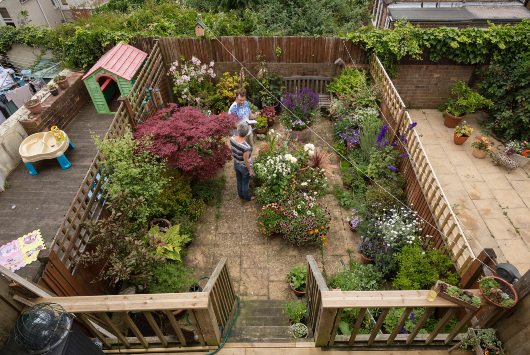
The RSPB is calling for everyone to join the wildlife-planting revolution after a YouGov survey revealed that three quarters of people are now doing at least something in their garden or outside space to help wildlife (with 19% trying a lot, 30% trying a fair amount, and 26% trying a little).
The survey, commissioned by the RSPB as part of their Nature on Your Doorstep campaign, also revealed the wide range of ways that people are already gardening with wildlife in mind - over two in five (43%) consider how a plant can benefit pollinators when choosing what to grow in their garden, just under a quarter (24%) leave areas of grass to grow long for nature, and nearly half of people feed birds (49%). With UK gardens and balconies covering over 4,000km2, twice the size of Greater London, all these actions put together create a vital network of refuges for wildlife).
Many previously familiar garden species are in decline. Starling numbers have fallen by two-thirds in Britain since the mid-1970s, for example, with populations of half of our bumblebee species falling, and hedgehog numbers crashing from 30 million to an estimated one million since the 1950s across England, Wales, and Scotland.
Planting for wildlife in gardens and outdoor spaces presents a fantastic opportunity to help struggling wildlife and is also a hugely popular activity. When asked in the survey to choose what one thing they would most like to do in a new empty outdoor space, half of people (50%) chose having more plants (either having a wildflower meadow (most popular at 16%), or planting fruit trees (11%), other kinds of trees (6%), shrubs (7%), or space for more flowers (10%)).
The survey also showed the potential for even more people to take up action and welcome wildlife into their gardens. Two thirds of respondents want to see local birds (68%) and pollinators (64%) in their local space, two groups of species that are easily attracted by growing wildlife-friendly plants.
Adrian Thomas, the RSPB’s wildlife gardening expert, said: “I’m thrilled to hear how many people are now taking steps to help wildlife in their gardens and outdoor spaces. It feels like a movement is underway in which people are recognising that our gardens can be wonderful, shared spaces for us and for wildlife, to the benefit of all.
“To play your part, the best and easiest place to start is to grow more plants. They provide varied, healthy food sources, and offer shelter and nesting spots. And the lovely thing is that lots of plants that are good for wildlife are also beautiful, colourful and richly scented, making outdoor spaces more welcoming, relaxing, and interesting for all of us to enjoy. So this Easter weekend, why not give planting a go, maybe starting with some wildflower seeds? They produce beautiful flowers in just a few weeks, and you’ll be surprised at how quickly you see pollinators buzzing into your garden!”
Here are five wildlife-friendly, easy-growing plants to get anybody started:
- Sunflowers – beautiful and easy to grow from seed, these classic flowers are great for pollinators and are a great food source for birds when they set seed.
- Cornfield annuals – for just a couple of pounds you can have the glow of red poppies and blue cornflowers within weeks
- Mini-meadow – just let parts of your lawn grow for a few months, or even better until late summer, and be rewarded with drifts of clovers and other meadow flowers
- Lavender - the familiar lovely-smelling herb that’s brilliant for bees and butterflies.
- Foxgloves - tall purple, pink and white flowers that are bee magnets.
For more suggestions, tips, and inspiration on how to give planting a go and join the wildlife-planting revolution visit www.rspb.org.uk/NatureOnYourDoorstep.